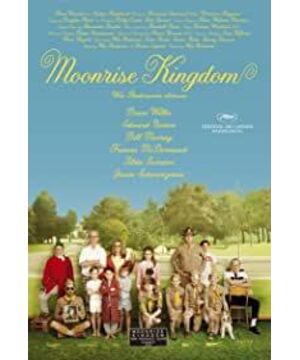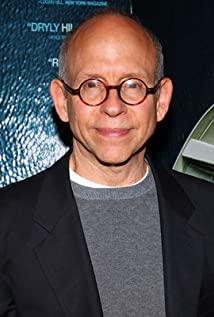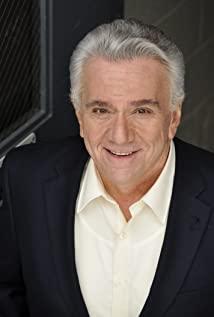/ Nianhua Smile
Anderson once again took us into the kingdom of fairy tales and into the dreamland that cannot be touched by the adult world.
The structure of the story is simple and clear, using a main thread narrative mode. The story itself does not reflect too much novelty and creativity. But any good story must have a theme. Personally, what I see in this story is a theme of "destruction and reconstruction", where destruction, often means reconstruction, but in this story, destruction does not mean reconstruction.
Why do you say so?
First let's look at the story.
This is a simple adult world fairy tale. (Severe spoilers here, don't follow if you mind.)
The two "problem" teenagers, because they were dissatisfied with the established adult world, negotiated an elopement together. The trials and tribulations that followed could not shake their determination to a better world and love. These two teenagers who seem to have problems are an alternative in real life, and they are the rebellion of the real world against the secular. A boy scout who is lonely and unable to handle comrade-in-arms relationships, but is full of enthusiasm for life, a precocious little loli who is a little cool, sensitive and has a sad insight into the adult world, just like this. It seems that they have turned their backs on a more harmonious and stable adult world. Actually?
In that picturesque island that gives us incomparable beauty and harmonious interpersonal relationships, there is an adult world full of disguise hidden. Susan's mother had a paradoxical relationship with the old police officer, but she only dared to meet secretly; Susan's father had insight into everything about his wife, but would rather pretend to be confused and miserable; the old police officer's calm life track also has The woman who hurts him, but now tastes alone; Edward Norton's Boy Scout Captain, whose real identity is a math teacher, the management of the Boy Scouts, Sam's disappearance, and the Boy Scouts' questioning about his identity are undoubtedly correct. doubts about his abilities. In this seemingly fairy tale island, the oppression, darkness and hypocrisy of the adult world are everywhere.
The two children escaped, and the director threw out the theme of "destroy" for the first time.
Destroy what? Destroy the safe world that adults have delineated for them, the moral norms that adults have set for them, they have to escape, go to the bay in their hearts, and "rebuild" the beautiful world in their hearts.
destroy.
reconstruction.
For adults, things, feelings and emotions that are flawed, because of the various factors in our inner fears, we often take the way of repairing, reforming, and even more neglecting, letting go, and compromising. For example, the relationship between Susan's parents that has already existed in name only, such as the loneliness and loneliness of the old police officer accompanying him.
We suppress, hide ourselves, we escape.
At night, Susan's parents lay in bed, her mother apologized, and her father said, "I'd rather a gust of wind blew me into outer space." We all use and use this typical adult escape. Maybe at some point, we can cross, escape from ourselves, escape from the predicament, but in the end, we are still trapped in the siege, sighing softly.
But in the world of children, an imperfect sand sculpture, a failed painting. They don't have too many concerns, the only mental model is to stop, rebuild, and redraw. Because less is more important, because they have no scruples, they use simple thinking patterns to decide their children's world, and also give themselves the courage to reborn "Moonrise Kingdom".
I'm not encouraging adults to recklessly destroy existing reality, but at least once in a while, we can be braver, simpler, more persistent, and childlike, and say "NO" to the world we don't like. Even just once. , and it will be a life without regrets.
The place where Susan and Sam first met was at the opera scene of Noah's Ark. In Genesis, God used a great flood of the century to destroy the human world and destroy civilizations full of disease. However, Noah built an ark, brought the animals on board, and waited for the flood to recede to rebuild a brand new world. The director shows us the themes of "destruction" and "rebirth" time and time again. At first, I had doubts about the role of "raven" played by Susan. After that, I specifically inquired about the meaning of the crow in Western culture and had an epiphany. After the flood receded, the first animal Noah released was a crow, and the crow never returned. Crows are rebellious, disobedient animals, just like Susan. But at the same time, it can find land, find a new home. This is rebirth, and what Susan is deeply about in the film. Without Susan, Sam might just be an unpopular Boy Scout; without Susan, Sam might lack the courage to run away; without Susan, Sam couldn't impress his comrades who had always held grudges against him . Susan is an alternative, but more reborn courage.
In the second half of the film, Anderson created a hurricane that was extremely destructive, and the damage was even more unscrupulous. The island was almost devastated, and the flood spread across the entire island, destroying everything that ever existed, beauty and hypocrisy. . Only the church that performed Noah's Ark has become a refuge for people and a reborn Noah's Ark. The director reiterated the themes of "destruction" and "rebirth" for the third time, echoing them successively, which is logical. The story ends here.
In the world of children, destruction equals rebirth, but what about the world of adults?
We are not in a hurry to say, rest, rest, let's talk about those things about the lens first.
About the lens.
Wes Anderson's work has ranged from "Youth" to "Crossing Darjeeling" to the famous "Fantastic Daddy Fox" and now "Moonrise Kingdom". The individualism of its shots becomes more pronounced and more determined.
The shots he uses are less complex to render. The two-dimensional lens mode brings us more sense of the fun of panning up and down and left and right. Replacing the depth lens with an approximately flat lens reduces the sense of layering of the picture, but also weakens the sense of substitution of the film.
The audience is placed in the perspective of a theatergoer, which widens the distance between us and this fairy tale and the movie, and the pessimism is just right. It seems to be saying, remember, you are just an adult watching the play, you can seriously watch one beautiful fairy tale after another, but you have lost your pass to enter.
But as far as the lens is concerned, this flat shooting lens mode also brings us a fresher visual experience. Each scene is more like a well-designed picture. With the warm color layout, it is beautiful and exquisite. Even if the complete film footage is broken down, it is undoubtedly a wonderful painting.
Also have to say is Wes Anderson's long shots.
At the beginning of the film, it entered the children's world with a long shot, and let us follow the camera to observe the real environment of Susan's life. The first shot of Sam's "appearance" is also swept by a long, long shot. Following the footsteps of the Boy Scout leaders, we have a more concise and clear understanding of the life of the Boy Scouts and their respective status.
"Long shots can continuously narrate and form montage techniques inside the picture, so that the narration is more complete, and it can more coherently accept the director's visual information, so as to express the story more directly." But for the cinematographer's skills More demanding. He needs to shoot handheld and expose more accurately depending on the scene.
The appearance of long shots is often used to express the director's specific conception and aesthetic taste. Taiwanese filmmakers prefer long shots, such as Hou Hsiao-hsien, Tsai Mingliang, and Yang Dechang's "One Yi" who have used long shots extensively. Wes used one of the few long shots as the opening of the film, and used a sporty long shot to make the film more real, vivid and natural. With the occasional Santa Claus showing his face, it added a documentary to the absurd. ism means. The advent of long takes provides viewers with more psychological choices for scenes, allowing viewers to "freely choose their own interpretations of things and events" in a documentary-like style. As Bazin said, "There is no correct picture, only the correct picture." And the use of this long lens has made our sense of substitution that was weakened a little stronger. I had to wonder if I was in a dream, sometimes real but illusory.
There is very little slow motion in the whole film, the most important of which is undoubtedly the scene where Susan and Sam start to flee after their marriage. From the moment of turning around until boarding the ship, slow motion is used for a long time. Seeing this time, I was extremely uncomfortable. The slowness seemed to announce that once the scene was over, we would immediately be beaten back into adult reality. The slowness seemed to be just to make this beautiful moment last longer. , longer, never ending. At this moment, my heart is pulled, because I know that the end of this beautiful slow motion must mean the end of the fairy tale.
Fairy tales always end, and reality needs to return. At the end of the film, the flood recedes and people return to their former lives. Back to Reality
In the real world of cinema, destruction does not bring rebirth. Children learn to compromise with adults, and they continue their love games within the limits set by adults.
A main thread is clearly missing at the end of the film, and we don't see how adults live after that. The seemingly lack of this main line, in my opinion, actually conveys a subjective emotion of the director, the pessimism about the adult world.
After all, Anderson is just an adult who can tell fairy tales. In this movie, the lack of fairy tales in the adult world will not be changed by a flood. Only in the world of children, the fairy tale-like handling is relatively warm, and the dark colors in the subconscious of the film are quietly hidden in the director's heart.
In addition, the relatively simple narration of the story, the lack of creativity at the end, as well as the unnovel subject matter and lack of in-depth thinking, also determine that this film cannot become a classic, and can only be a niche work. That being said, it's not that I don't like this movie, on the contrary, Wes Anderson and his work are my loves. I'm just standing on a more objective standpoint, and I'm nit-picking hoping that the director's next masterpiece can be more profound in terms of storytelling.
At the end, the fairy tale ends, the world of adults is not reborn like Noah's Ark, and there is no crow or dove to lead them to the new world. Most adults are touched for a moment after reading the fairy tale, and nothing can be changed. We all just watch other people's movies, continue our own stories, return to our own reality of depression, escape, and sadness, and then continue.
Perhaps only the place called "Moon Rising Kingdom" can always retain the most persistent persistence and pure courage. That kingdom is in Sam's painting, on the beach with the words "Moonrise Kingdom" clearly written, in the purest hearts of the two children, and in the dreams we once passed away.
It's a fairy tale, that's all. Destroy, not necessarily rebuild.
But the courage to destroy is precious.
View more about Moonrise Kingdom reviews











